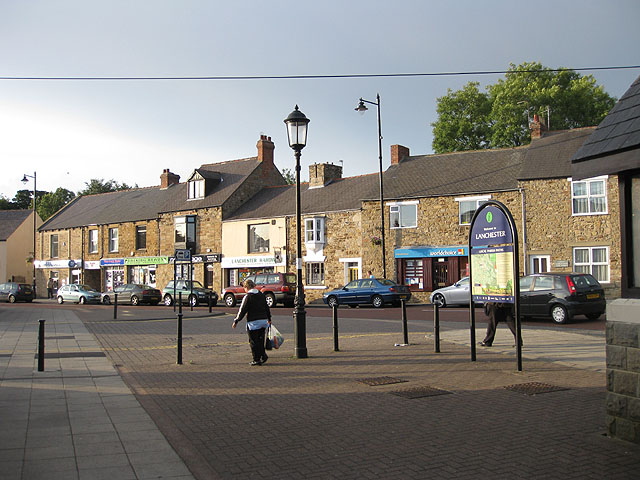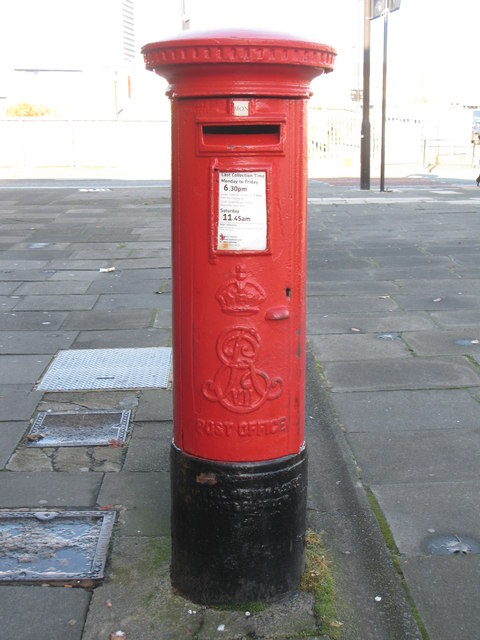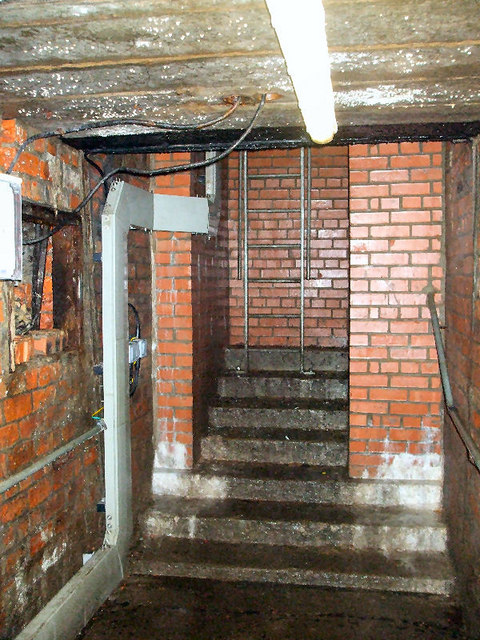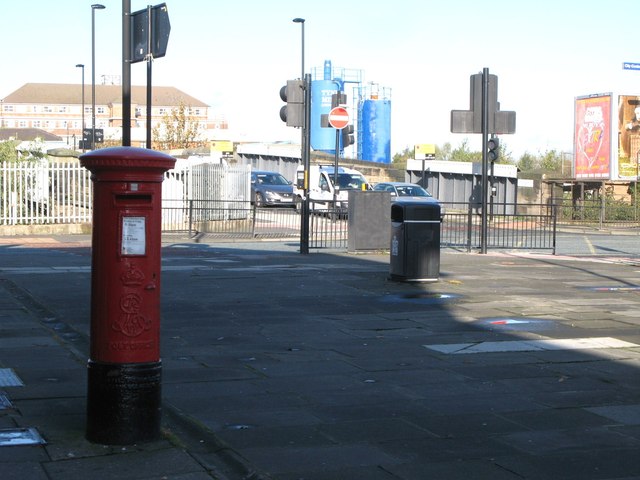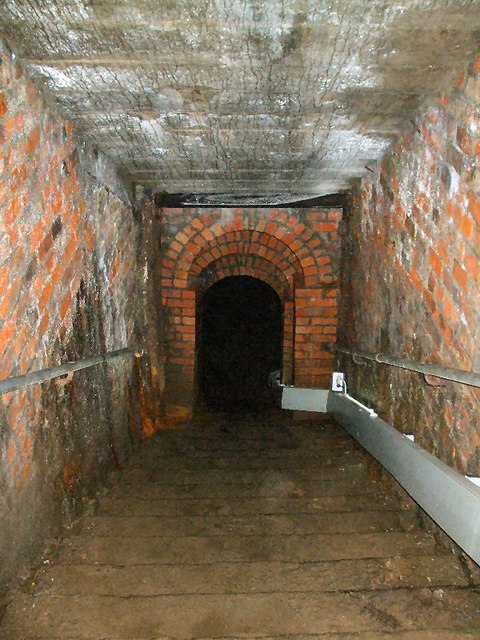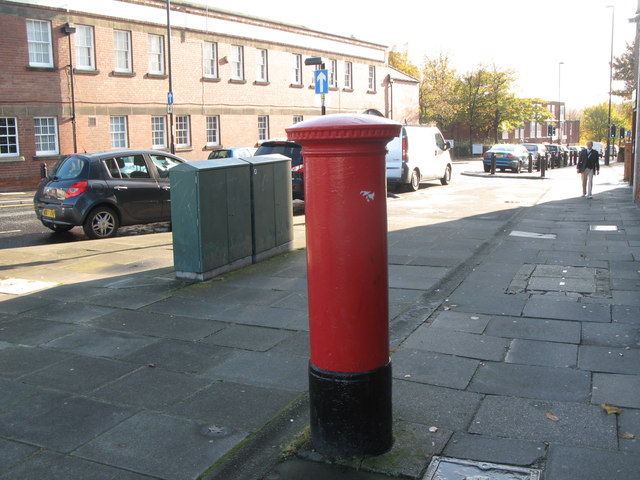Topics > County Durham > Civil Parishes in County Durham > Lanchester Civil Parish > Lanchester Parish, 1848
Lanchester Parish, 1848
LANCHESTER (All Saints), a parish, and the head of a union, chiefly in the W. division of Chester ward, N. division, but partly in the N.W. division, of Darlington ward, S. division of the county of Durham; comprising the townships of Benfieldside, Billingside, Burnop with Hamsteels, Butsfield, Collierly, Conside with Knitsley, Cornsay, Ebchester, Esh, Greencroft, Healyfield, Holmside, Ivestone, Kyo, Lanchester, Langley, Medomsley, and Satley; and containing 7,783 inhabitants, of whom 579 are in the township of Lanchester, 8 miles (N.W. by W.) from Durham. This place, which occupies the site of a principal Roman station, is supposed by Camden, Gale, and Hunter, to have been Longovicum, and by Horsley, Glambanta or Glanoventa; more modern writers regard it as Epiacum. The period of its origin is uncertain, but its restoration is ascribed to the Emperor Gordian; it stood on the line of the Watling-street, and was successively garrisoned by a portion of the twentieth legion, the Varduli, and the Ligones. The station occupied an eminence half a mile eastward from the village: the rampart, inclosing a cultivated area of eight acres, is in most parts quite perfect; and numerous coins, altars, monuments, and other relics, especially a plate of solid gold with an inscription to the god Mars, have been discovered, several of which are preserved in the library at Durham.
The parish comprises by computation 41,890 acres, of which upwards of 16,000 acres of common land were divided in 1773; the chief portion is held under the see. The village, now small and straggling, was once of considerable importance; it lies in a warm sheltered vale watered by the Smalhope burn, and the road from Durham to Shotley-Bridge passes through it. Pettysessions are held once a fortnight, and a court for the recovery of debts under 40s. twice a year. The living is a perpetual curacy; net income, £123; patron, the Bishop of Durham; impropriators, T. Cookson, Esq., and others. The tithes were commuted for land in 1773. The church is a venerable structure in the early English style, and consists of a nave, aisles, chancel, south porch, and tower at the west end, surmounted by an embattled parapet, with crocketed pinnacles at the angles. The chancel, the arch of which is a fine specimen of the transition from the Norman to the early English style, is 44 feet in length, by 15 in breadth, and has on the east three tall lancet windows, the centre one with a portion of stained glass: on the south side are two windows of double lights, and a third of three lights; and on the north a window of two lights. It contains five ancient stalls, an elegant piscina, several sculptured decorations, and some interesting monuments. The church was made collegiate, for a dean and seven prebendaries, by Bishop Anthony Beke, about 1283, and the college was valued at the Dissolution at £49. 3. 4.: the dean's house occupied a plot of ground surrounded by a fosse, a little northward from the church. There are separate incumbencies at Collierly, Ebchester, Esh, Medomsley, and Satley; and several places of worship for dissenters: at Brooms is a Roman Catholic chapel. The poor-law union of Lanchester comprises 18 chapelries or townships, and contains a population of 9,969 persons.
Extract from: A Topographical Dictionary of England comprising the several counties, cities, boroughs, corporate and market towns, parishes, and townships..... 7th Edition, by Samuel Lewis, London, 1848.
It is notable the Annfield Plain, as a place of growing importance, got an entry in this gazeteer (at that time part of the Township of Kyo, in the Parish).

Co-Curate Page
Billingside Township, 1848
- BILLINGSIDE, a township, in the parish and union of Lanchester, W. division of Chester ward, N. division of the county of Durham, 13 miles (N.W.) from Durham; containing 13 inhabitants. …

Co-Curate Page
Kyo Township, 1848
- KYO, a township, in the parish and union of Lanchester, W. division of Chester ward, N. division of the county of Durham, 10½ miles (N.W.) from Durham; containing 965 inhabitants. …

Co-Curate Page
Butsfield Township, 1848
- BUTSFIELD, a township, in the parish and union of Lanchester, W. division of Chester ward, N. division of the county of Durham, 11 miles (W. by N.) from Durham; containing …

Co-Curate Page
Annfield-Plain, 1848
- Extract from: A Topographical Dictionary of England comprising the several counties, cities, boroughs, corporate and market towns, parishes, and townships..... 7th Edition, by Samuel Lewis, London, 1848. ANNFIELD-PLAIN, a colliery …

Co-Curate Page
Collierly, Township, 1848
- COLLIERLY, a township, in the parish and union of Lanchester, W. division of Chester ward, N. division of the county of Durham, 10½ miles (S.W.) from Gateshead; containing, with the …

Co-Curate Page
Ebchester, 1848
- EBCHESTER, a chapelry, in the parish and union of Lanchester, W. division of Chester ward, N. division of the county of Durham, 12 miles (W.S.W.) from Gateshead; containing 331 inhabitants. …

Co-Curate Page
Esh, 1848
- ESH, or ASH, a chapelry, in the parish and union of Lanchester, W. division of Chester ward, N. division of the county of Durham, 5 miles (W.N.W.) from Durham; containing …

Co-Curate Page
Greencroft
- GREENCROFT, a township, in the parish and union of Lanchester, W. division of Chester ward, N. division of the county of Durham, 9 miles (N.W. by W.) from Durham; containing …

Co-Curate Page
Langley Township, 1848
- LANGLEY, a township, in the parish and union of Lanchester, W. division of Chester ward, N. division of the county of Durham, 5½ miles (N.W.) from Durham; containing 81 inhabitants. …

Co-Curate Page
Medomsley, 1848
- MEDOMSLEY, a chapelry, in the parish and union of Lanchester, W. division of Chester ward, N. division of the county of Durham, 2¼ miles (N.E.) from Shotley-Bridge, and 11 (S.W. …
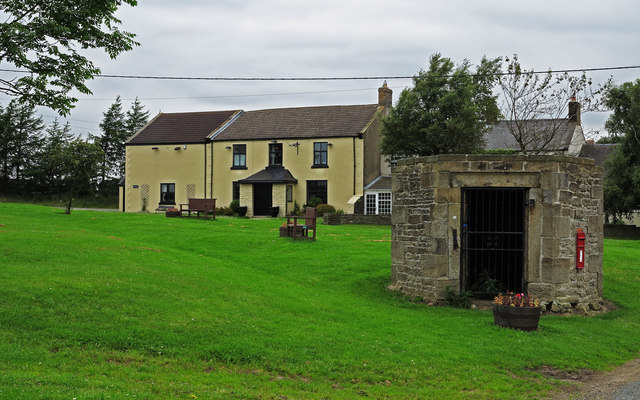
Co-Curate Page
Cornsay
- Overview About Cornsay Map Street View Cornsay is a village in County Durham, located about 7 miles west of the City of Durham and 2½ miles south-west of Lanchester. Cornsay …

Co-Curate Page
Benfieldside, 1848
- BENFIELDSIDE, a township, in the chapelry of Medomsley, parish and union of Lanchester, W. division of Chester ward, N. division of the county of Durham, 14 miles (N.W. by N.) …

Co-Curate Page
Satley, 1848
- SATLEY, a township and chapelry, in the parish and union of Lanchester, W. division of Chester ward, N. division of the county of Durham, 5 miles (N.E. by N.) from …

Co-Curate Page
Holmside
- HOLMSIDE, a township, in the parish and union of Lanchester, W. division of Chester ward, N. division of the county of Durham, 7¼ miles (N.W.) from Durham; containing 610 inhabitants. …

Co-Curate Page
Consett with Knitsley Township, 1848
- CONSIDE, or CONSETT, with Knitsley, a township, in the chapelry of Medomsley, parish and union of Lanchester, W. division of Chester ward, N. division of the county of Durham, 14½ …

Co-Curate Page
Iveston Township, 1848
- IVESTONE, a township, in the parish and union of Lanchester, W. division of Chester ward, N. division of the county of Durham, 10½ miles (N.W. by W.) from Durham; containing …


Co-Curate Page
Billingside Township, 1848
- BILLINGSIDE, a township, in the parish and union of Lanchester, W. division of Chester ward, N. division of the county of Durham, 13 miles (N.W.) from Durham; containing 13 inhabitants. …

Co-Curate Page
Kyo Township, 1848
- KYO, a township, in the parish and union of Lanchester, W. division of Chester ward, N. division of the county of Durham, 10½ miles (N.W.) from Durham; containing 965 inhabitants. …

Co-Curate Page
Butsfield Township, 1848
- BUTSFIELD, a township, in the parish and union of Lanchester, W. division of Chester ward, N. division of the county of Durham, 11 miles (W. by N.) from Durham; containing …

Co-Curate Page
Annfield-Plain, 1848
- Extract from: A Topographical Dictionary of England comprising the several counties, cities, boroughs, corporate and market towns, parishes, and townships..... 7th Edition, by Samuel Lewis, London, 1848. ANNFIELD-PLAIN, a colliery …

Co-Curate Page
Collierly, Township, 1848
- COLLIERLY, a township, in the parish and union of Lanchester, W. division of Chester ward, N. division of the county of Durham, 10½ miles (S.W.) from Gateshead; containing, with the …

Co-Curate Page
Ebchester, 1848
- EBCHESTER, a chapelry, in the parish and union of Lanchester, W. division of Chester ward, N. division of the county of Durham, 12 miles (W.S.W.) from Gateshead; containing 331 inhabitants. …

Co-Curate Page
Esh, 1848
- ESH, or ASH, a chapelry, in the parish and union of Lanchester, W. division of Chester ward, N. division of the county of Durham, 5 miles (W.N.W.) from Durham; containing …

Co-Curate Page
Greencroft
- GREENCROFT, a township, in the parish and union of Lanchester, W. division of Chester ward, N. division of the county of Durham, 9 miles (N.W. by W.) from Durham; containing …

Co-Curate Page
Langley Township, 1848
- LANGLEY, a township, in the parish and union of Lanchester, W. division of Chester ward, N. division of the county of Durham, 5½ miles (N.W.) from Durham; containing 81 inhabitants. …

Co-Curate Page
Medomsley, 1848
- MEDOMSLEY, a chapelry, in the parish and union of Lanchester, W. division of Chester ward, N. division of the county of Durham, 2¼ miles (N.E.) from Shotley-Bridge, and 11 (S.W. …

Co-Curate Page
Cornsay
- Overview About Cornsay Map Street View Cornsay is a village in County Durham, located about 7 miles west of the City of Durham and 2½ miles south-west of Lanchester. Cornsay …

Co-Curate Page
Benfieldside, 1848
- BENFIELDSIDE, a township, in the chapelry of Medomsley, parish and union of Lanchester, W. division of Chester ward, N. division of the county of Durham, 14 miles (N.W. by N.) …

Co-Curate Page
Satley, 1848
- SATLEY, a township and chapelry, in the parish and union of Lanchester, W. division of Chester ward, N. division of the county of Durham, 5 miles (N.E. by N.) from …

Co-Curate Page
Holmside
- HOLMSIDE, a township, in the parish and union of Lanchester, W. division of Chester ward, N. division of the county of Durham, 7¼ miles (N.W.) from Durham; containing 610 inhabitants. …

Co-Curate Page
Consett with Knitsley Township, 1848
- CONSIDE, or CONSETT, with Knitsley, a township, in the chapelry of Medomsley, parish and union of Lanchester, W. division of Chester ward, N. division of the county of Durham, 14½ …




